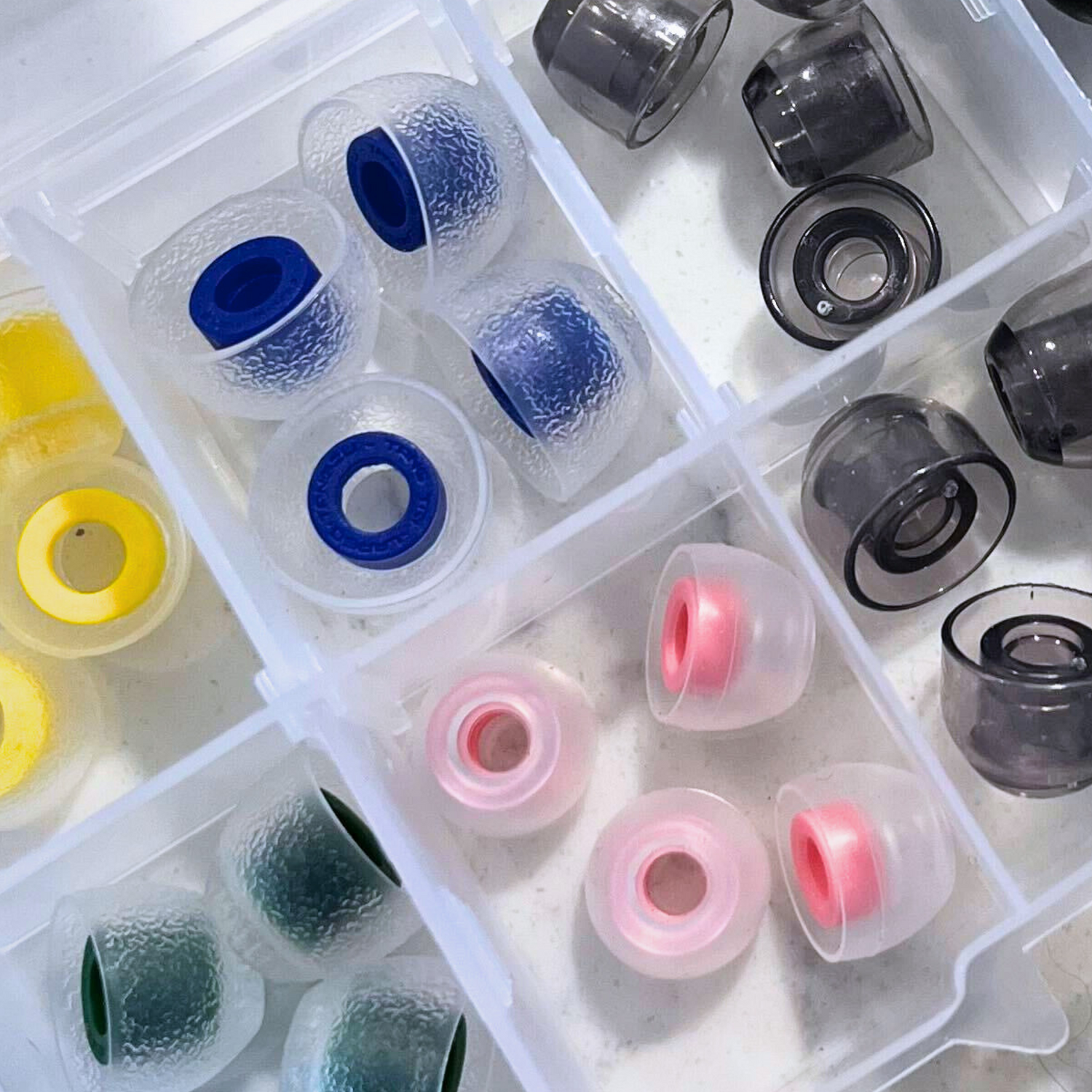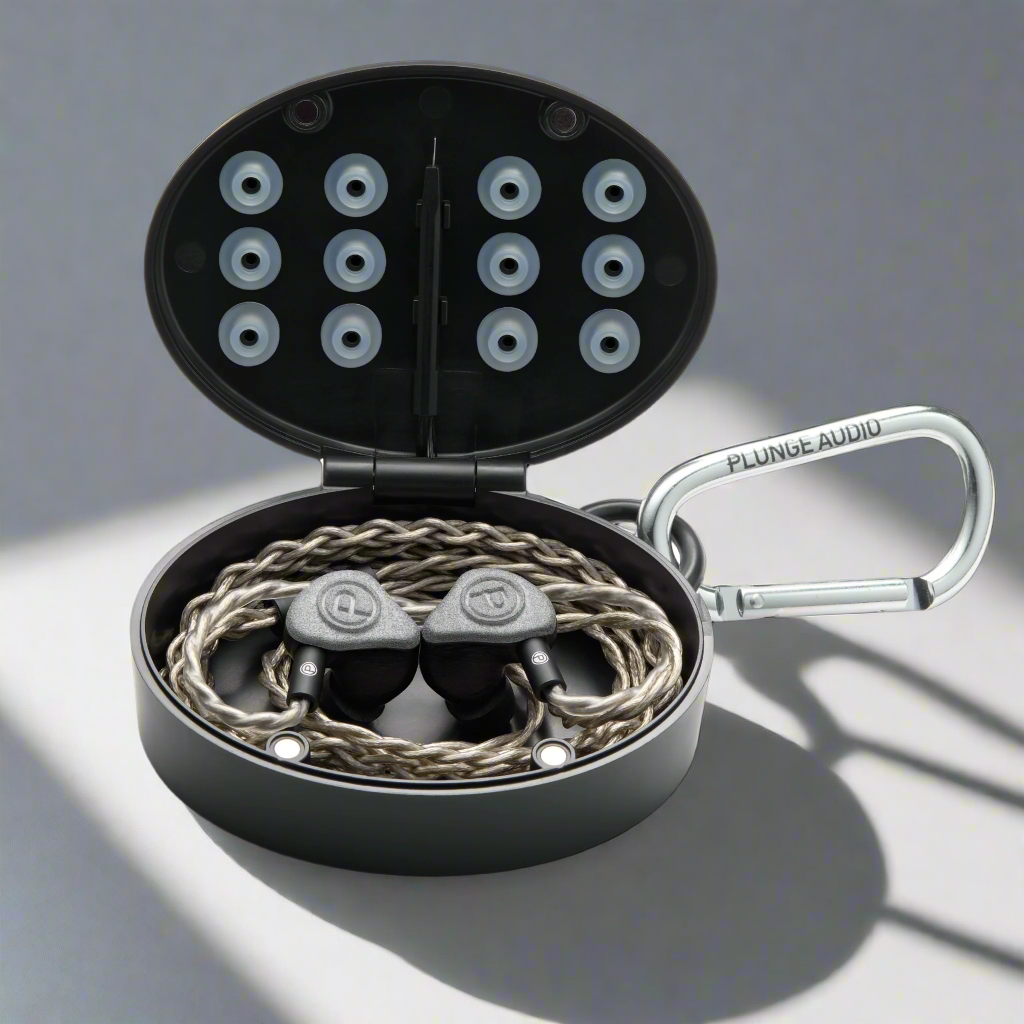If you’ve ever struggled to get your in-ear monitors (IEMs) feeling just right, you’re not alone. The truth is, no matter how premium your IEMs are, the ear tip fit can make or break your experience — affecting everything from comfort to isolation to sound quality.
Finding the perfect IEM tip size is part science, part personal preference, and it’s one of the most important things you can dial in for long gigs, sessions, or casual listening. In this post, we’ll break down why tip fit matters, how to know you’ve nailed it, and a few easy guidelines to follow.
Why IEM Tip Fit Is So Important
Your ear canals aren’t one-size-fits-all — and neither are ear tips. A proper IEM seal affects:
- Sound quality: An airtight seal ensures you’re getting full bass response and clear, balanced audio.
- Noise isolation: Well-fitted tips block external noise, reducing the need to crank your volume.
- Comfort: Poorly fitting tips can cause ear fatigue, soreness, or constant adjustment.
Bottom line: If your IEMs don’t feel or sound right, the first place to check is your ear tips.
How to Know You’ve Found the Perfect Fit
While tip fit is subjective, there are a few reliable signs to help you know when you’ve got it right:
✅ Secure Seal: Your IEMs should feel snug but not uncomfortable. They should stay in place with light head movements — no slipping or popping out.
✅ Even Sound: If the audio sounds thin, harsh, or lacks bass, your seal might be incomplete. A good fit delivers balanced, full-range sound.
✅ Comfort Over Time: The perfect fit feels unnoticeable after a few minutes. If you’re constantly adjusting or feeling pressure, it’s worth trying a different size or material.
✅ Effective Isolation: When inserted properly, you should experience noticeable passive noise isolation, muting external sounds without needing high volumes.
Tips for Finding Your Ideal IEM Tip Size
- Start with the included options. Plunge Audio IEMs (like our Unity Stage IEMs) come with multiple foam and silicone tip sizes. Always test all of them — you might be surprised which one feels best.
-
Try different materials.
- Foam tips typically offer better isolation thanks to their tight seal and a slightly warmer overall sound. Just a heads up — they don’t last as long as silicone tips before needing to be replaced. To help them last a bit longer, it’s best to gently wipe them with warm water and a soft cloth instead of using rubbing alcohol.
- Silicone tips are comfortable and can be better suited for extended use since they put less pressure on the inner ear. They offer slightly less isolation, which some artists actually prefer, along with a slightly brighter overall sound. As a bonus, they’re super durable with normal use and easy to clean — you can soak them in hot water or wipe them with rubbing alcohol without worrying about damaging the material.
- Test both ears individually. Many people have slight asymmetry between their ears. It’s perfectly normal to use a medium in one ear and a small in the other.
- Insert them properly. Gently compress foam tips before insertion or slightly twist silicone tips into place for a proper seal.
- Don’t force it. Comfort is key. If a tip feels too large or causes ear fatigue, size down.
When to Swap or Replace Your Tips
- Loss of seal or slipping during use
- Noticeable drop in sound quality
- Visible wear, cracks, or damage
- Foam tips losing rebound or firmness
Fresh tips can dramatically restore comfort and sound — they’re one of the easiest and most affordable ways to upgrade your listening experience.
Final Thoughts: The Right Fit Is Personal
At the end of the day, the perfect IEM tip size is subjective — but following these guidelines will help you get there faster. Listen to your ears (literally and figuratively), trust your comfort instincts, and don’t be afraid to experiment.
Pro tip: If you’re having trouble finding your fit, reach out to us — we’re always happy to help.
Need to stock up on tips? Shop Now!



